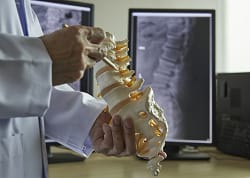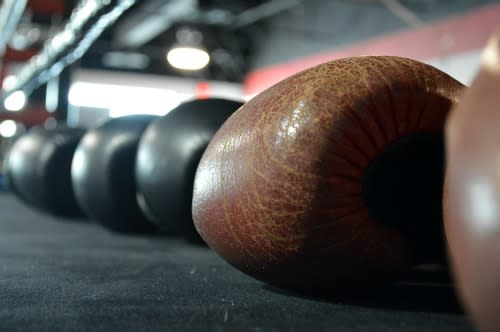By Corinne VanBeek, MD
Anyone with a shoulder injury knows it’s no walk in the park, especially when you’re told your options for treatment are limited. And if you’ve ever had a tear in the rotator cuff, you probably know severe shoulder pain and dysfunction can result. If non-operative treatments didn’t offer you pain relief and better function, surgical repair becomes a necessary option to explore. Your rotator cuff is made up of four muscles, and once these muscles experience a tear, it won’t heal on its own.
Over time, a rotator cuff tear can increase in size and its muscles shrink and fill with fat (a condition we call atrophy). Furthermore, the muscles retract deeper into the shoulder and scar in. This process is what makes a tear irreparable and rules out traditional arthroscopic rotator cuff repair as an option. Even if reattachment is attempted, the sutures used to repair the tendon may pull through the tissue and the tendon is irreparable.
A good option for older, less active patients with this condition
2. Latissimus Dorsi transfer
Involves the transfer of non-rotator cuff tendons to the humerus. Recovery is long and challenging and results can be unpredictable in those who qualify for this procedure.
3. Superior Capsular Reconstruction (SCR)
This is a breakthrough technique in the world of shoulders for younger patients with irreparable rotator cuff tears. Recovery is similar to that of a traditional arthroscopic rotator cuff repair.
Introduced in 2007 in Japan, the procedure is still new and not yet practiced by many, let alone by others in Fairfield County, CT. This new method allows for a significantly more robust tissue graft (which we call an allograft) to be tied into the shoulder through an arthroscopic approach to restore function.
I tell my patients that this graft is not a true substitute for the rotator cuff. And as with any surgery, the patient must be appropriately qualified for this technique. A surgeon who is trained in this technique is able to assess a patient’s shoulder condition to determine if this is a procedure that will prove beneficial. In general, it is primarily for younger patients with irreparable rotator cuff tears with no shoulder arthritis. While this technique is, again, clearly not a true replacement, it can be a good option and early outcomes data appears promising.
I’m fortunate to be amongst the small percentage of shoulder surgeons in the country now performing this procedure. I’m a shoulder fellowship trained, board certified orthopedic surgeon at Stamford Health. View my profile to learn more.
Anyone with a shoulder injury knows it’s no walk in the park, especially when you’re told your options for treatment are limited. And if you’ve ever had a tear in the rotator cuff, you probably know severe shoulder pain and dysfunction can result. If non-operative treatments didn’t offer you pain relief and better function, surgical repair becomes a necessary option to explore. Your rotator cuff is made up of four muscles, and once these muscles experience a tear, it won’t heal on its own.
Over time, a rotator cuff tear can increase in size and its muscles shrink and fill with fat (a condition we call atrophy). Furthermore, the muscles retract deeper into the shoulder and scar in. This process is what makes a tear irreparable and rules out traditional arthroscopic rotator cuff repair as an option. Even if reattachment is attempted, the sutures used to repair the tendon may pull through the tissue and the tendon is irreparable.
So now what are your options?
1. Reverse total shoulder replacementA good option for older, less active patients with this condition
2. Latissimus Dorsi transfer
Involves the transfer of non-rotator cuff tendons to the humerus. Recovery is long and challenging and results can be unpredictable in those who qualify for this procedure.
3. Superior Capsular Reconstruction (SCR)
This is a breakthrough technique in the world of shoulders for younger patients with irreparable rotator cuff tears. Recovery is similar to that of a traditional arthroscopic rotator cuff repair.
Introduced in 2007 in Japan, the procedure is still new and not yet practiced by many, let alone by others in Fairfield County, CT. This new method allows for a significantly more robust tissue graft (which we call an allograft) to be tied into the shoulder through an arthroscopic approach to restore function.
I tell my patients that this graft is not a true substitute for the rotator cuff. And as with any surgery, the patient must be appropriately qualified for this technique. A surgeon who is trained in this technique is able to assess a patient’s shoulder condition to determine if this is a procedure that will prove beneficial. In general, it is primarily for younger patients with irreparable rotator cuff tears with no shoulder arthritis. While this technique is, again, clearly not a true replacement, it can be a good option and early outcomes data appears promising.
I’m fortunate to be amongst the small percentage of shoulder surgeons in the country now performing this procedure. I’m a shoulder fellowship trained, board certified orthopedic surgeon at Stamford Health. View my profile to learn more.
Featured Expert/ Author























